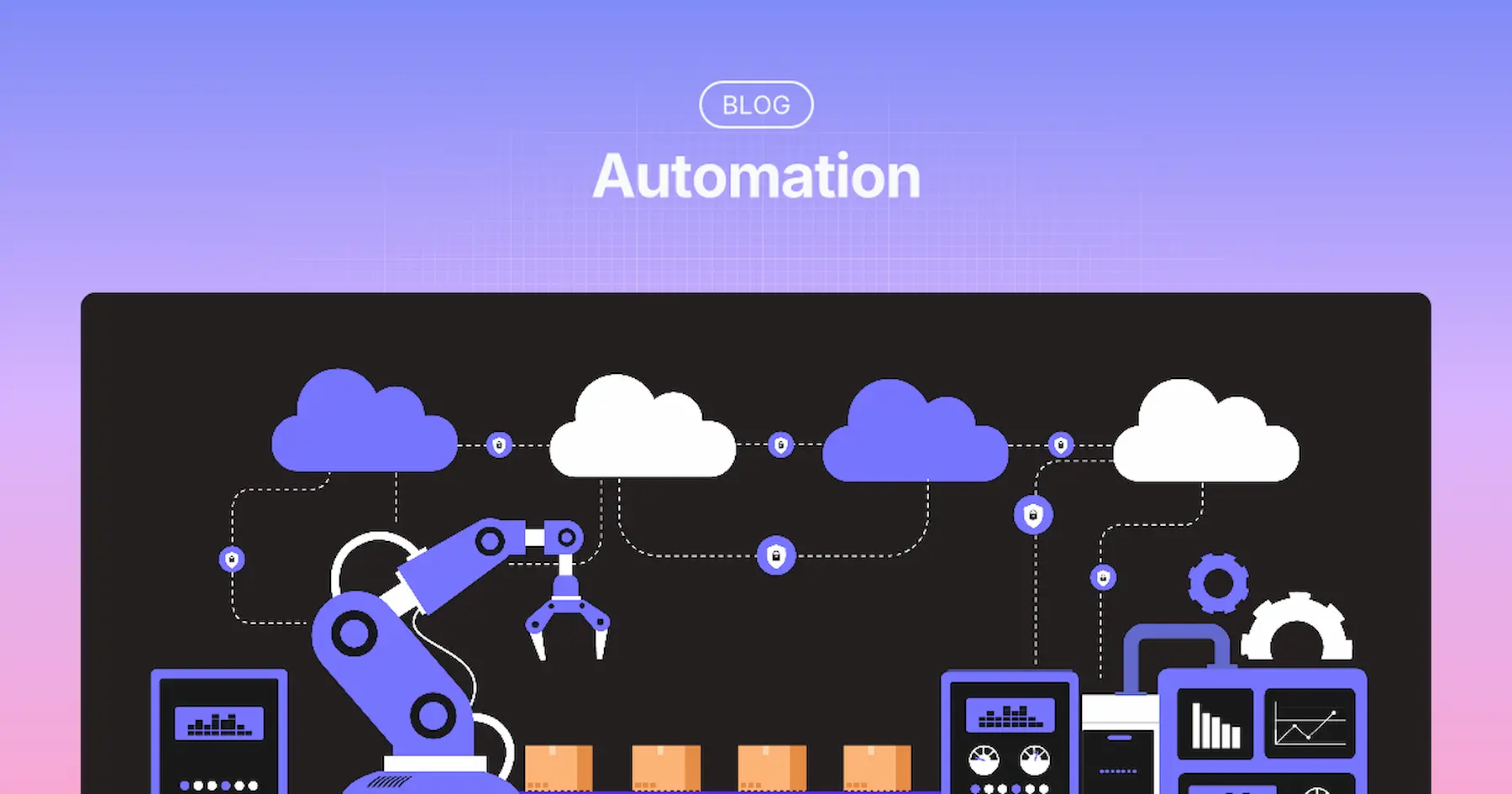Five Repetitive Tasks Businesses Should Automate
Sep 19, 2024
Integrating systems, such as connecting a Shopify store to a CRM, streamlines business operations by automating the flow of data between platforms.
Subscribe to our newsletter
Subscribe to our newsletter


In the competitive business landscape, time is your most valuable resource. RVB Data Sciences offers a powerful solution to help you reclaim it - Business Process Automation (BPA). Dive in and let's explore what tasks businesses should be automating.
There’s a tool available from RVB that will give you a distinct advantage over competitors – it saves you more of life’s most valuable resource: time.
Business Process Automation (BPA) is where advanced technology meets convenience – a computer program designed to handle basic business processes without need for a human to complete those tasks. Instead of replacing an employee, BPA is designed to assist them with those mundane and tedious tasks. That includes onboarding employees and customers, IT services, and low-level marketing tasks.
Here are the tasks RVB Data Sciences can automate for your business:
Automate Manufacturing Processes
Supply chain? Quality assurance? Everything can be automated. Why send an email to your vendors every time you need parts? Once you get to certain stock levels, we can automatically generate a PO and send it away. Need to approve it? We can add that step. There are not many limitations.
Customer Inquiries
Automation answers basic questions and streamlines the rest. Want to direct their tech questions to your IT support specialist? AI chat-bots and automated directories make this easy. We tune the AI program to match your operations.
CRMs, Finance, HR, and Many Other Operations
All of these systems can be integrated. You can have invoices, services tickets, company details, product details, email history chains, benefits, and a plethora of other important information in one area. This not only saves time but also ensures accuracy and consistency in your business operations.
Compliance and Reporting
Automating compliance reporting allows companies to accurately and efficiently collect data, generate reports, and ensure timely submissions to regulatory bodies. Automated systems also improve audit readinessby maintaining detailed records, provide real-time monitoring to prevent violations, and reduce operational costs.
Systems Integration
Integrating systems, such as connecting a Shopify store to a CRM, streamlines business operations by automating the flow of data between platforms. This integration ensures that customer information, order details, and inventory levels are automatically updated across both systems, reducing manual data entry and the risk of errors.
Join The Burlington Club

Trending Posts

Join The Burlington Club

Trending Posts

Five Repetitive Tasks Businesses Should Automate
Sep 19, 2024
Integrating systems, such as connecting a Shopify store to a CRM, streamlines business operations by automating the flow of data between platforms.
Subscribe to our newsletter
Subscribe to our newsletter


In the competitive business landscape, time is your most valuable resource. RVB Data Sciences offers a powerful solution to help you reclaim it - Business Process Automation (BPA). Dive in and let's explore what tasks businesses should be automating.
There’s a tool available from RVB that will give you a distinct advantage over competitors – it saves you more of life’s most valuable resource: time.
Business Process Automation (BPA) is where advanced technology meets convenience – a computer program designed to handle basic business processes without need for a human to complete those tasks. Instead of replacing an employee, BPA is designed to assist them with those mundane and tedious tasks. That includes onboarding employees and customers, IT services, and low-level marketing tasks.
Here are the tasks RVB Data Sciences can automate for your business:
Automate Manufacturing Processes
Supply chain? Quality assurance? Everything can be automated. Why send an email to your vendors every time you need parts? Once you get to certain stock levels, we can automatically generate a PO and send it away. Need to approve it? We can add that step. There are not many limitations.
Customer Inquiries
Automation answers basic questions and streamlines the rest. Want to direct their tech questions to your IT support specialist? AI chat-bots and automated directories make this easy. We tune the AI program to match your operations.
CRMs, Finance, HR, and Many Other Operations
All of these systems can be integrated. You can have invoices, services tickets, company details, product details, email history chains, benefits, and a plethora of other important information in one area. This not only saves time but also ensures accuracy and consistency in your business operations.
Compliance and Reporting
Automating compliance reporting allows companies to accurately and efficiently collect data, generate reports, and ensure timely submissions to regulatory bodies. Automated systems also improve audit readinessby maintaining detailed records, provide real-time monitoring to prevent violations, and reduce operational costs.
Systems Integration
Integrating systems, such as connecting a Shopify store to a CRM, streamlines business operations by automating the flow of data between platforms. This integration ensures that customer information, order details, and inventory levels are automatically updated across both systems, reducing manual data entry and the risk of errors.
The Burlington Club

Trending Posts

The Burlington Club

Trending Posts

Burlington 365.
@burlington365
@burlington365
,
News
Podcasts
Businesses
Sep 19, 2024
Five Repetitive Tasks Businesses Should Automate
Integrating systems, such as connecting a Shopify store to a CRM, streamlines business operations by automating the flow of data between platforms.

In the competitive business landscape, time is your most valuable resource. RVB Data Sciences offers a powerful solution to help you reclaim it - Business Process Automation (BPA). Dive in and let's explore what tasks businesses should be automating.
There’s a tool available from RVB that will give you a distinct advantage over competitors – it saves you more of life’s most valuable resource: time.
Business Process Automation (BPA) is where advanced technology meets convenience – a computer program designed to handle basic business processes without need for a human to complete those tasks. Instead of replacing an employee, BPA is designed to assist them with those mundane and tedious tasks. That includes onboarding employees and customers, IT services, and low-level marketing tasks.
Here are the tasks RVB Data Sciences can automate for your business:
Automate Manufacturing Processes
Supply chain? Quality assurance? Everything can be automated. Why send an email to your vendors every time you need parts? Once you get to certain stock levels, we can automatically generate a PO and send it away. Need to approve it? We can add that step. There are not many limitations.
Customer Inquiries
Automation answers basic questions and streamlines the rest. Want to direct their tech questions to your IT support specialist? AI chat-bots and automated directories make this easy. We tune the AI program to match your operations.
CRMs, Finance, HR, and Many Other Operations
All of these systems can be integrated. You can have invoices, services tickets, company details, product details, email history chains, benefits, and a plethora of other important information in one area. This not only saves time but also ensures accuracy and consistency in your business operations.
Compliance and Reporting
Automating compliance reporting allows companies to accurately and efficiently collect data, generate reports, and ensure timely submissions to regulatory bodies. Automated systems also improve audit readinessby maintaining detailed records, provide real-time monitoring to prevent violations, and reduce operational costs.
Systems Integration
Integrating systems, such as connecting a Shopify store to a CRM, streamlines business operations by automating the flow of data between platforms. This integration ensures that customer information, order details, and inventory levels are automatically updated across both systems, reducing manual data entry and the risk of errors.
Join The Burlington Club

Trending Posts



